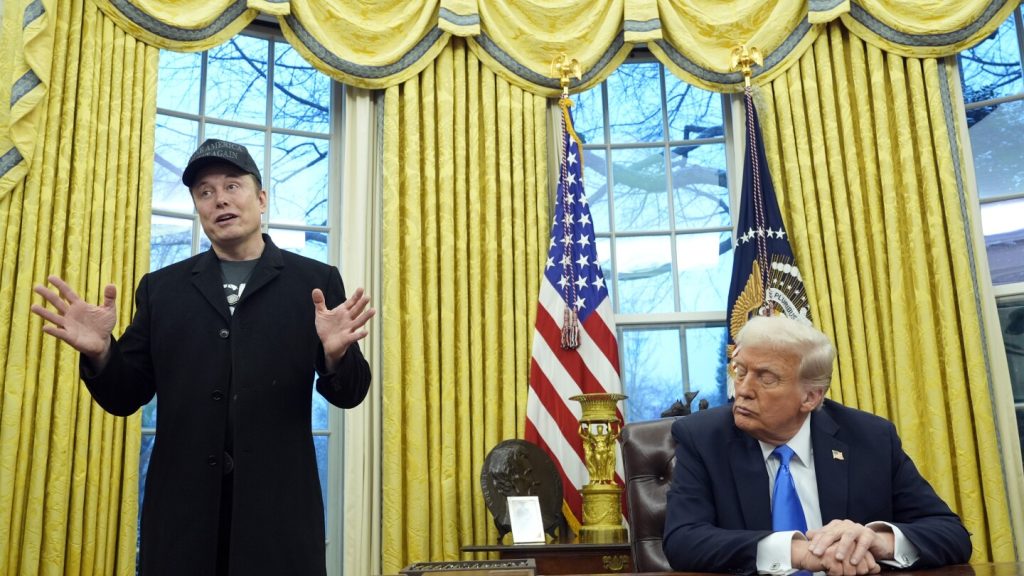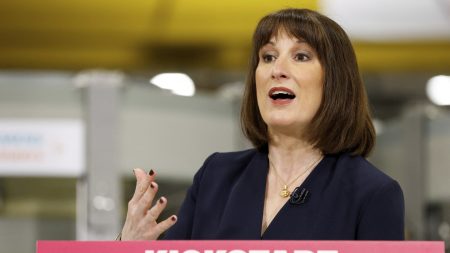A Rare Collaboration: Trump and Musk Join Forces to Reshape the Federal Workforce
Streamlining Government: The Executive Order and Its Implications
In an unusual appearance together, President Donald Trump and Elon Musk, a key adviser to the administration, met in the Oval Office on Tuesday. This meeting took place ahead of Trump signing an executive order aimed at further reducing the size of the federal workforce. Musk, known for his efforts to cut government spending through his role in the Department of Government Efficiency, emphasized the need for accountability within the federal bureaucracy. He referred to it as an “unelected” fourth branch of government, a notion that has sparked both interest and concern among political observers and federal employees alike. Musk asserted that the public had voted for significant government reform and that this is what they would receive, framing it as a democratic imperative.
Musk’s Vision for Government Accountability
Musk, who has been a special government employee with considerable influence over federal agencies, addressed reporters for the first time since joining the Trump administration. Despite criticisms that he is accumulating unchecked power with limited transparency, Musk portrayed himself as an “open book,” even likening the scrutiny he faces to a “daily proctology exam.” The White House fact sheet on the executive order revealed that federal agencies would be required to develop plans for substantial workforce reductions and identifies agencies or agency components that could be eliminated or merged if their functions are not mandated by law. Additionally, the order stipulates that agencies should not hire more than one employee for every four employees who leave federal service, with exceptions for areas such as immigration, law enforcement, and public safety.
Buyouts and Uncertainty: Federal Workers Weigh Their Options
The Trump administration, in collaboration with Musk, has been encouraging federal workers to resign in exchange for financial incentives through a deferred resignation program. Although the program is currently on hold pending a court review of its legality, more than 65,000 workers have reportedly accepted the offer. The program would allow employees to leave their jobs while still receiving pay until September 30. However, not all federal workers are convinced of the program’s merits. Janet Connelly, a graphic designer at the Department of Energy, expressed her distrust of the initiative, stating, “From the get-go, I didn’t trust it.” She has attempted to filter out emails from the Office of Personnel Management promoting the program but has found the messages relentless. Connelly views her work as an important service to the American public and believes it is too easy to vilify federal employees.
The Human Cost: Anxiety Among Federal Workers
The federal workforce is grappling with widespread fear and uncertainty as the changes take shape. Helen Bottcher, a former Environmental Protection Agency employee and current union leader in Seattle, described the anxiety that has permeated the federal workforce. “They’re worried about their jobs. They’re worried about their families. They’re also worried about their work and the communities they serve,” she said during a press conference hosted by Senator Patty Murray, a Democrat from Washington. Murray echoed these concerns, stating that federal workers deserve better than to be threatened and pushed out by Musk and Trump. She also warned that if these employees leave their positions, essential government functions could begin to fail.
A Government Lawyer’s Perspective: Fear and Skepticism
A government lawyer, who spoke to the Associated Press on the condition of anonymity, painted a stark picture of life as a federal worker under the current administration. She described it as a terrifying time, with many employees worried that their phones and computers are being monitored. As a single mother with a young daughter, she is under pressure from her father to seek a safer job in the private sector. Despite this, she remains skeptical of the deferred resignation program, pointing out that accepting the offer would prevent workers from suing if they are not paid as promised. She characterized the idea as “insane.”
A Divided Future: Union Leaders and Politicians Push Back
The collaboration between Trump and Musk has drawn sharp criticism from union leaders and politicians who argue that the federal workforce is being unfairly targeted. Senator Patty Murray has been a vocal advocate for federal workers, emphasizing their importance to the functioning of the government and the communities they serve. She criticized the administration’s approach, stating that workers deserve better than to be threatened, intimidated, and pushed out the door by Musk and Trump. Meanwhile, union leaders like Helen Bottcher continue to rally support for federal employees, highlighting their dedication to public service and the challenges they face under the current administration. As the legal and political battles over the federal workforce continue to unfold, one thing is clear: the stakes are high, and the impact on government operations and the lives of federal workers will be significant.








